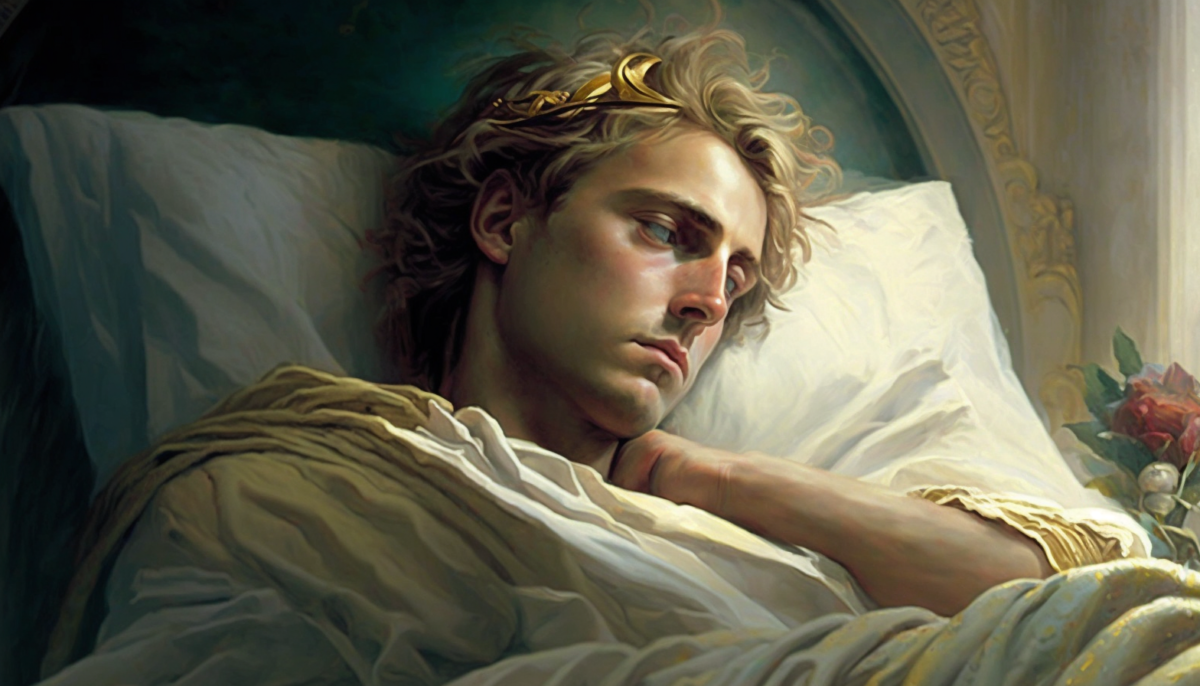The story of Alexander the Great’s final resting place remains one of the greatest mysteries of the ancient world. As one of history’s most accomplished conquerors, the young Macedonian King’s exploits ranged from Greece to India.
His death at 32 marked the beginning of the Hellenistic age – a time when ancient Greek values spread across the Near East. Despite the passage of time, the location of his final resting place continues to elude historians and archaeologists alike.
Alexander’s body was transported across the Near East, precipitating wars and founding dynasties, before disappearing without a trace in the late fourth century.
In this article, we will explore what we know and believe about the enigmatic fate of Alexander the Great’s body and ponder the question that has captivated scholars for centuries – where is Alexander the Great buried?
The Aftermath of Alexander’s Death
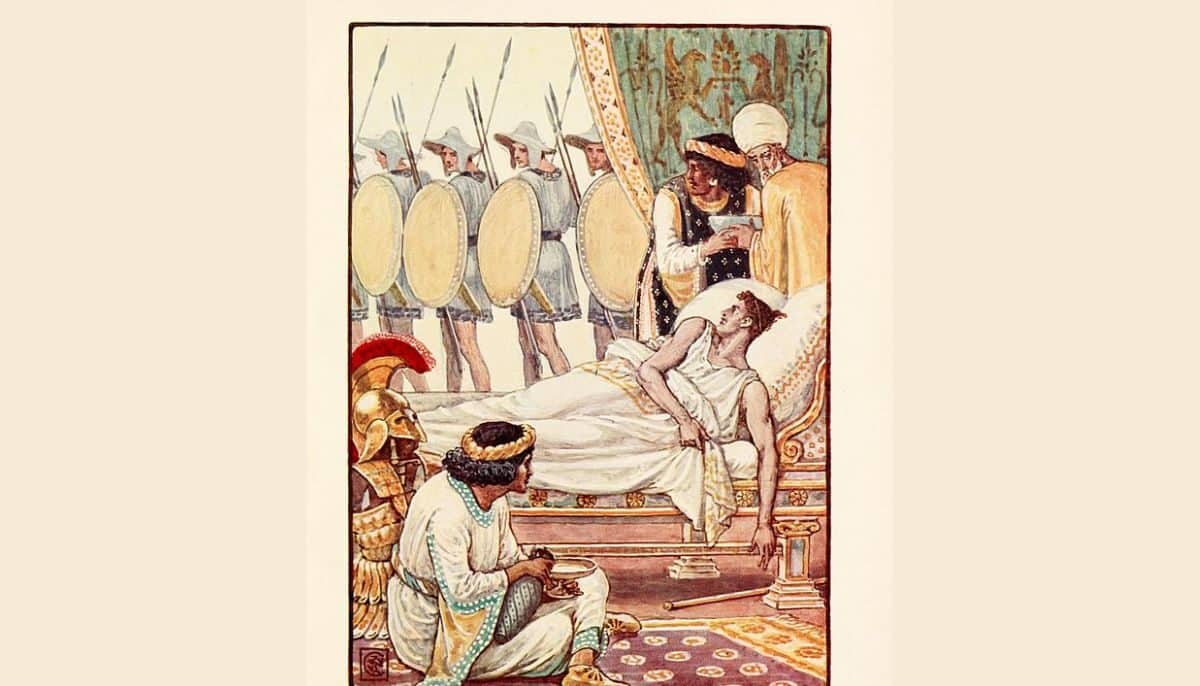
Alexander the Great was known for his military conquests. He often retained existing power structures in conquered lands. This pattern extended to his vague succession plan.
Alexander left no clear guidelines for who should inherit his empire. His only directive was that it should go “to the strongest.” The reason for this lack of planning is unclear. It could be due to his youth or indifference.
After Alexander’s death, his empire was divided among his generals, who ruled under the nominal control of the Macedonian throne. However, the only two possible heirs were Alexander’s unborn child and his mentally disabled half-brother, Phillip Arrhideaeus.
This posed a problem for Perdiccas, Alexander’s second-in-command, who controlled the throne and would serve as regent for either of the heirs. With political unrest brewing in Macedonia, Perdiccas realized this power structure was unstable and devised a plan.
-Check out our article on what Alexander could have accomplished if he hadn’t died so young.
The Funeral Procession of Alexander the Great
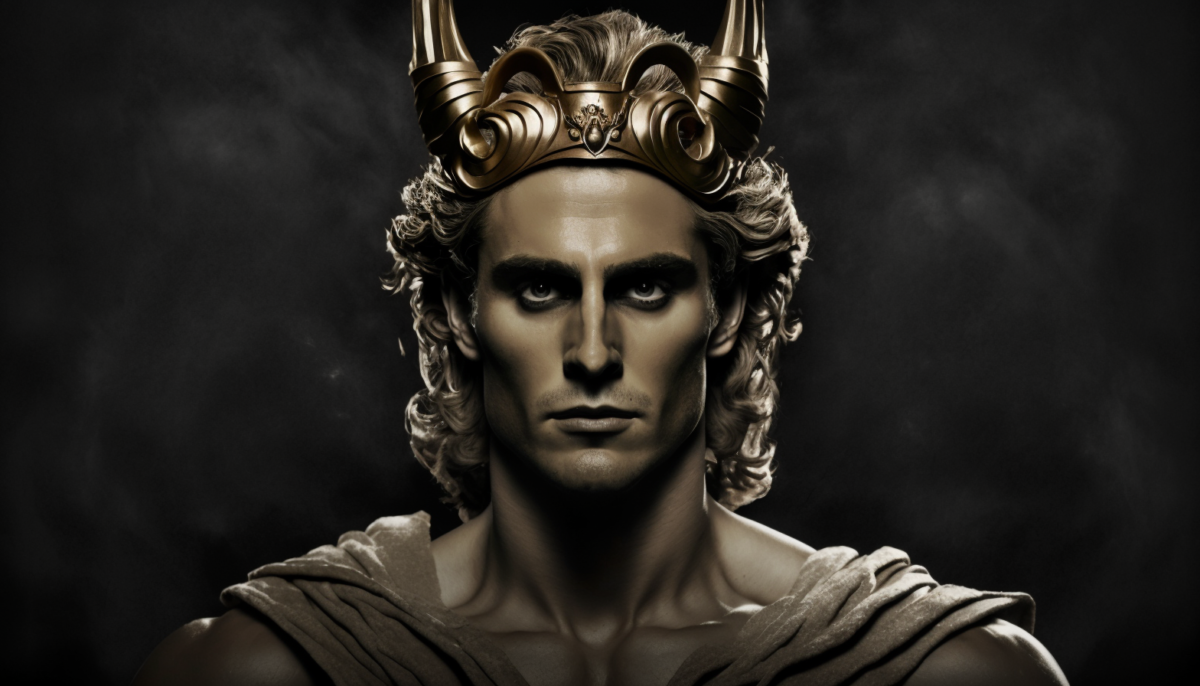
After Alexander died in the Palace of Nebuchadnezzar in Babylon, it is believed that he expressed a desire to be buried in the temple of the Egyptian god Ammon Ra, located in Siwa, Egypt.
However, with his empire beginning to fracture, Perdiccas saw an opportunity to solidify his power. He planned to return to Macedonia and bury Alexander with his ancestors at Aegae. This wise political move would allow him to march an army into Macedonia under the guise of honoring Alexander.
However, the journey would not be quick. First, the body of Alexander had to be embalmed and adorned with elaborate gold and rare jewels, a process that local Egyptian artisans performed like that used for ancient pharaohs.
Once this was completed, the funeral cart was crafted. A simple stone sarcophagus would not suffice, so a massive cart weighing over 100 tonnes was built, requiring 64 mules to move it.
The Road Back to Macedonia

After a two-year delay, Alexander’s body began its 2,000-mile journey back to his homeland. The funeral procession traveled up the Euphrates and Tigris rivers, through the Syrian desert, and towards southern Turkey. This delay had severe consequences for Perdiccas, who was in Babylon at the time.
As the procession neared, Ptolemy intercepted it. As the Governor of Egypt and a former general under Alexander, Ptolemy understood the body’s political value. He took possession and aimed to bring it to Egypt, dealing a significant setback to Perdiccas.
Death on the Nile
Perdiccas amassed an army and marched on Egypt to confront Ptolemy. His campaign faced defeat at the Nile.
As he attempted to retreat, many of his men were swept away by the river. Following this disaster, Ptolemy seized the opportunity to bribe Perdiccas’s officers.
Among the conspirators was Seleucus, another former general of Alexander. Undermined from within, Perdiccas was assassinated and stabbed to death by his men.
With Perdiccas gone, the power struggle among Alexander’s successors became even more chaotic and violent. This period in history is known as the Diadochi Wars.
Alexander’s Initial Burial in Memphis, Egypt
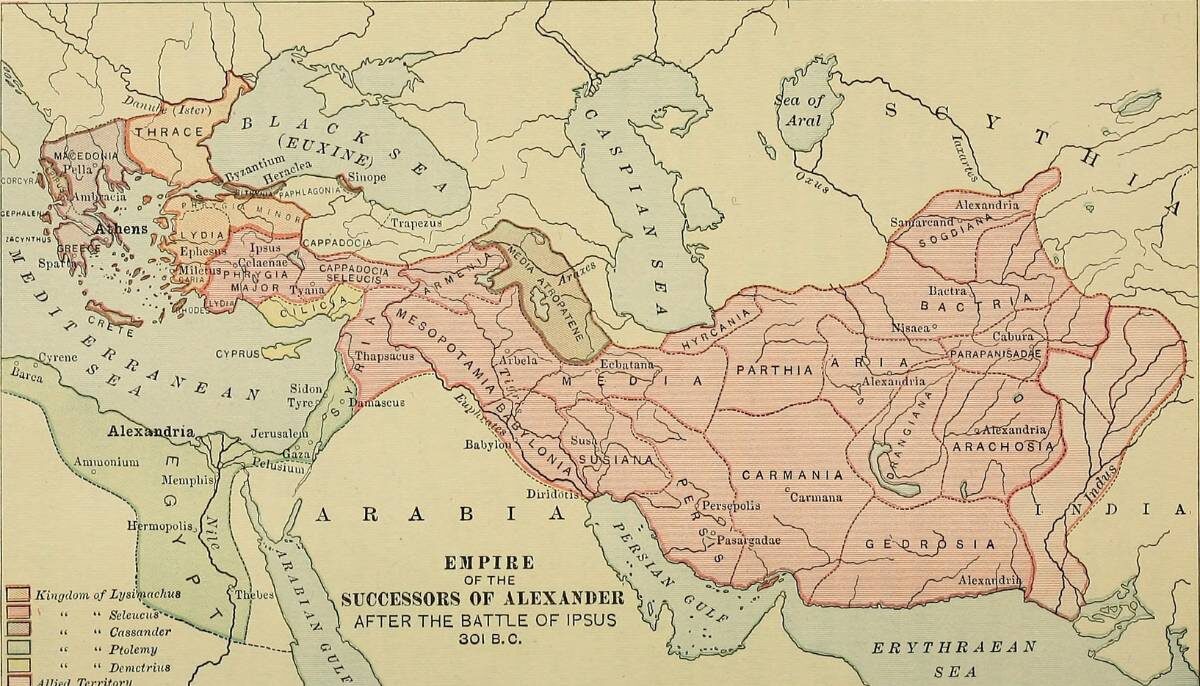
Now in control of Alexander’s body, Ptolemy had a clear goal: to entrench his rule over Egypt and establish his dynasty.
Initially, he moved the body to the ancient city of Memphis, the traditional home of the Egyptian pharaohs. This move was significant as it was the first city that Alexander had captured from the Persians.
However, Alexander had bigger plans for Egypt. Before his death, he had started the construction of a new capital city on the Mediterranean coast – Alexandria.
He decided to bury the conqueror in Alexandria, where he hoped to build a magnificent tomb and establish his dynasty upon the grave.
Reburial of Alexander in Alexandria, Egypt
The tomb’s construction was a grand affair, with Ptolemy sparing no expense. He hired the most skilled artisans and craftsmen across the empire to create a magnificent final resting place for Alexander.
The tomb was decorated with gold, precious stones, and intricate carvings, a fitting tribute to one of history’s greatest conquerors.
The tomb was a tribute to Alexander and a powerful symbol of Ptolemy’s authority. By burying Alexander in Alexandria, Ptolemy was sending a clear message to his rivals that he was the rightful heir to Alexander’s legacy.
Pilgrimage to Alexander’s tomb
The tomb of Alexander the Great became one of the most famous pilgrimage sites of the ancient world. Visitors came from far and wide to see the tomb and pay their respects to the legendary conqueror.
It became a symbol of the power and glory of the Greek world and a testament to the achievements of one of history’s most significant figures.
Alexandria Under Roman Rule
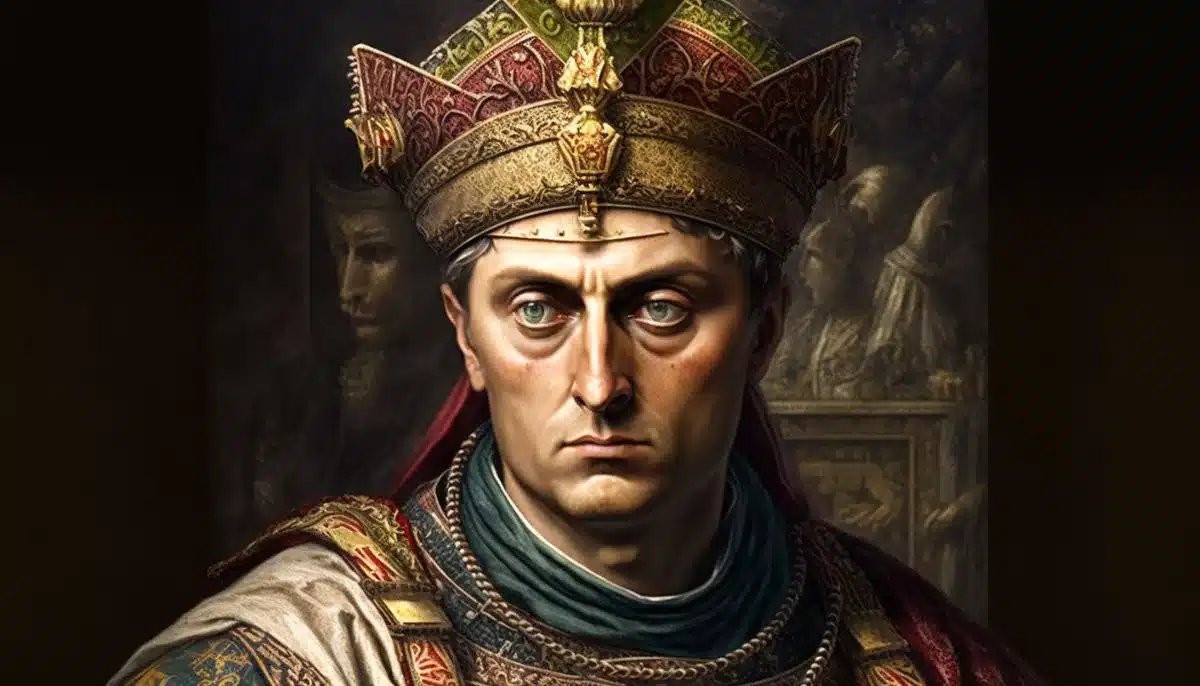
Alexander’s body remained in Alexandria long after the Ptolemaic Empire, and historical accounts report that it was visited by influential Roman figures such as Caesar, Antony, and Augustus. Even Emperors Septimius Severus and Caracalla, who ruled in the third century, were said to have viewed the tomb.
The Rise of Christianity
However, as Christianity began to replace paganism throughout the Roman Empire, Alexander’s tomb became a target. The Christian monotheistic belief was incompatible with the idea of Alexander as a deity.
The city of Alexandria was also undergoing rapid change during the fourth century. The patriarch of Alexandria, Theophilus, sought to erase pagan history and replace it with Christian places of worship. As part of his mission, he destroyed many pagan temples in the city.
During this time, many believe Christian forces destroyed Alexander’s tomb and body, ending the centuries-long preservation of the conqueror’s remains.
Is Alexander the Great Still Buried in Alexandria?
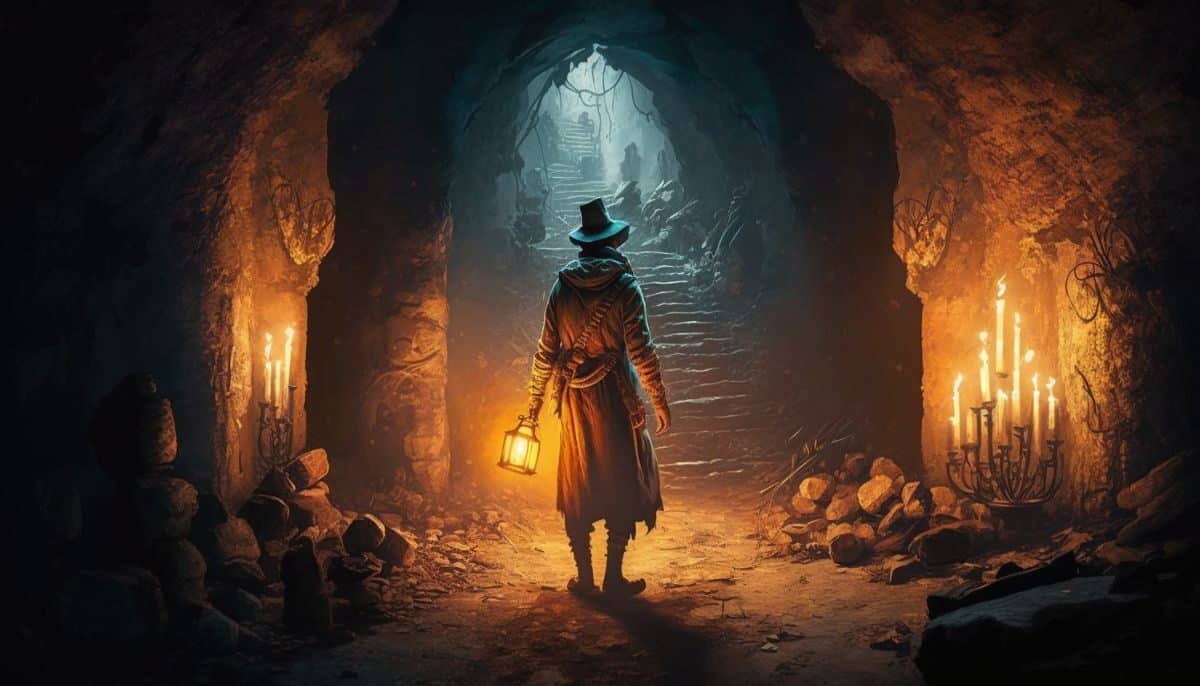
Centuries later, Alexandria was still considered the most likely location. Reports from visitors to the city through the Middle Ages have kept the hope of finding the tomb alive, and numerous sites have been excavated throughout the 20th century in the quest to discover the ancient conqueror’s burial place.
One theory that has gained traction is that Alexander’s tomb lies hidden somewhere in the catacombs beneath the Mosque of the Prophet Daniel, a modern-day mosque built on the remains of a church, which was built on the ruins of the tombs of the Ptolemies.
This complex history of the site, with multiple layers of construction and destruction over time, could help to explain how such a critical tomb could have been lost for so long.
Archaeological excavations in ancient cities like Alexandria can be a complex labyrinth of different historical periods, making searching for Alexander’s final resting place a daunting challenge.
What if Alexander the Great Isn’t Buried in Alexandria?
Alexandria is considered the most likely location for Alexander’s tomb, but there have been numerous unfounded theories about his burial site.
Every time a new ancient tomb is uncovered in the Eastern Mediterranean, speculation arises that it may be Alexander’s final resting place.
Despite this, many of these theories have been discredited or remain unverified.
The St. Marks Cathedral Switch Conspiracy
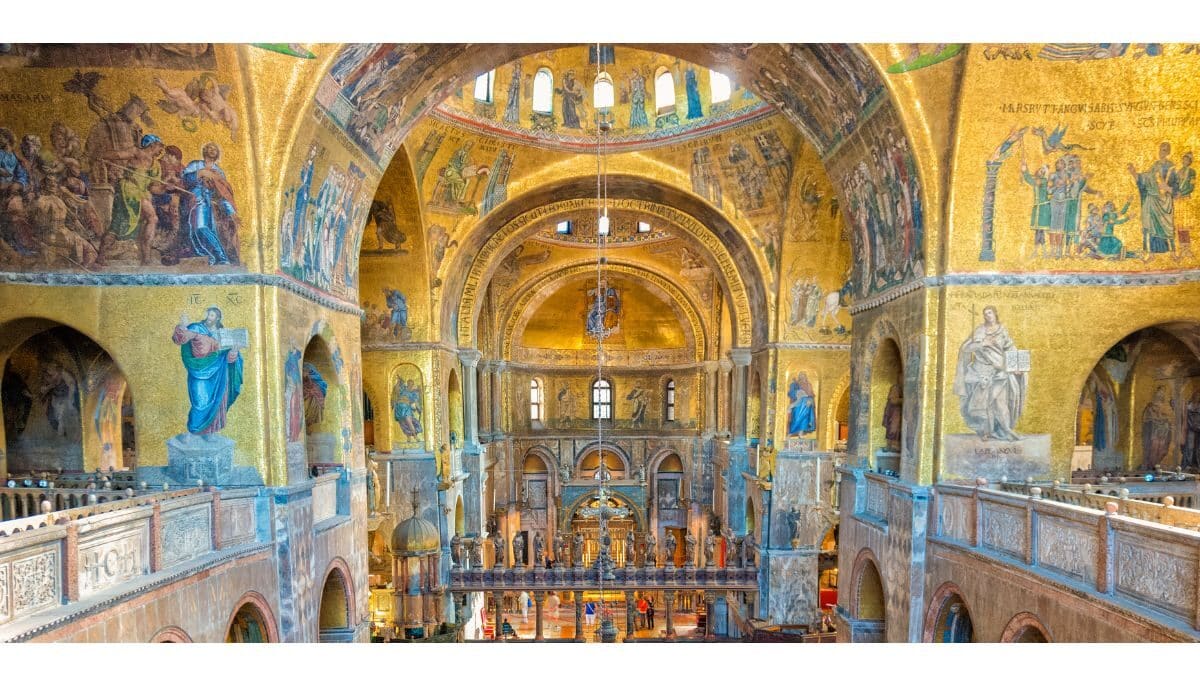
While highly unlikely, the theory that Alexander the Great’s body is buried in St Mark’s tomb in Venice is still fascinating and has been the subject of much discussion and debate.
According to the theory, Alexandrians disguised Alexander’s body as that of St. Mark to protect it from destruction during the anti-pagan movements of the fourth century.
In the 9th century, Venetian traders were believed to have smuggled the body out of Alexandria to protect it from the Islamic Arab ruling class. The body was then interred in Venice, where it remains to this day.
This wild theory is probably not true, but it is fascinating. We have covered the St Mark’s switch conspiracy in full detail here – I highly recommend reading up on it if you are unfamiliar.
The Breccia Sarcophagus
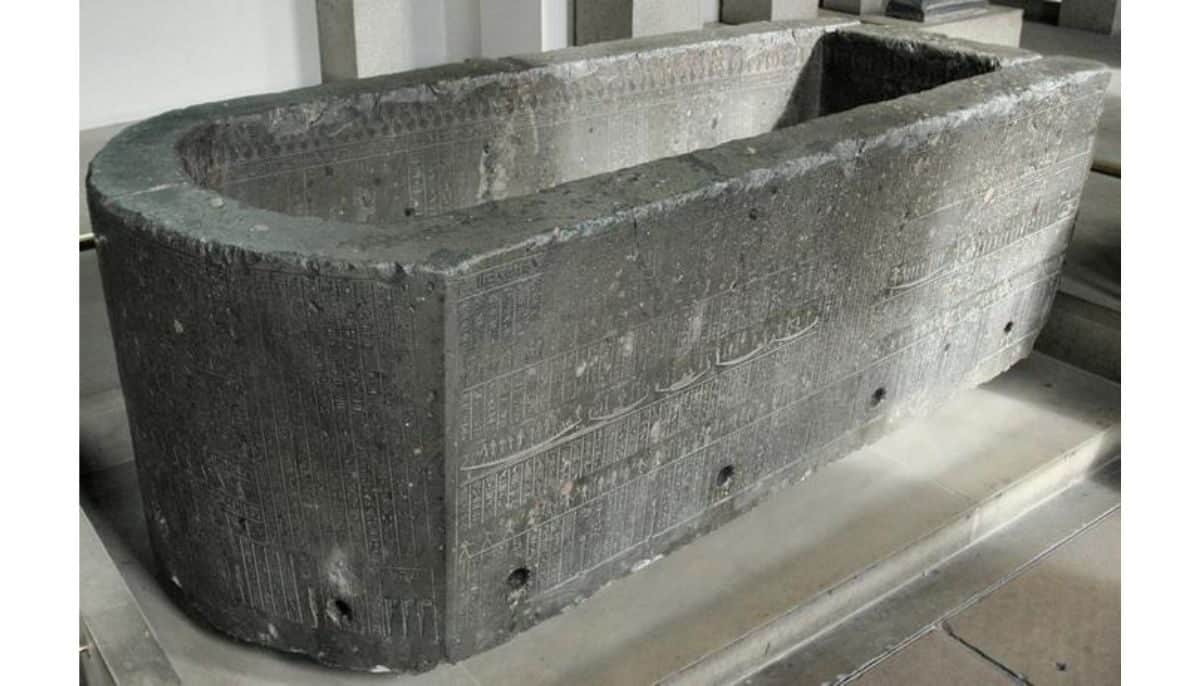
For a long time, there was a belief that the Breccia sarcophagus might have been Alexander’s final resting place. In 1798, when Napoleon Bonaparte’s armies invaded Egypt, they stumbled upon an elaborate tomb in the courtyard of a mosque.
The tomb was made of green breccia, a precious gemstone covered in ancient Egyptian hieroglyphics. The locals were convinced that it was Alexander’s tomb.
When the French were eventually expelled from Egypt in 1801, the British took control of the sarcophagus. They transported it to London and displayed it at the Natural History Museum.
The discovery of the Rosetta Stone allowed historians to translate the hieroglyphics on the tomb. This ultimately proved that the coffin was not Alexander’s but that of an Egyptian pharaoh named Nectanebo II.
Despite this, the Breccia sarcophagus remains a remarkable artifact and a testament to ancient Egyptian craftsmanship.
The Alexander Sarcophagus
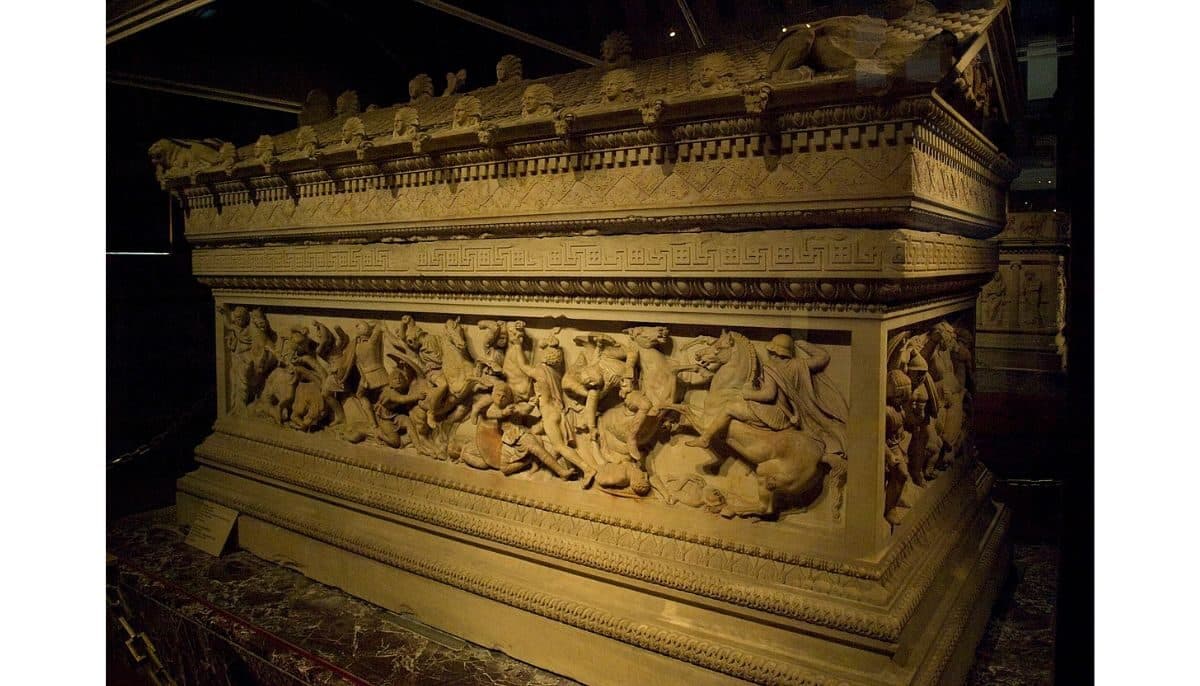
The Alexander Sarcophagus was unearthed in 1887 from a tomb near Sidon, Lebanon. The beautifully crafted marble sarcophagus depicts intricate carvings of Alexander and his Macedonian soldiers engaged in battle with the Persians.
The tomb dates back to the period around Alexander’s death, fueling speculation that it was made for him.
However, this theory is now largely dismissed by scholars. The true identity of the tomb’s occupant remains a mystery, with two leading possibilities. The first is Abdalonymus, the king of Sidon during that time, and the second is Mazaeus, a Persian governor of Babylon.
Regardless of the occupant’s identity, the Alexander Sarcophagus remains a significant archaeological discovery that offers a glimpse into ancient art and history.
So that’s what we know up until the present day. Where Alexander the Great is buried remains one of the ancient world’s biggest mysteries.
The rediscovery of his body would be the most significant historical discovery of the 21st century. Where do you think we should look?
